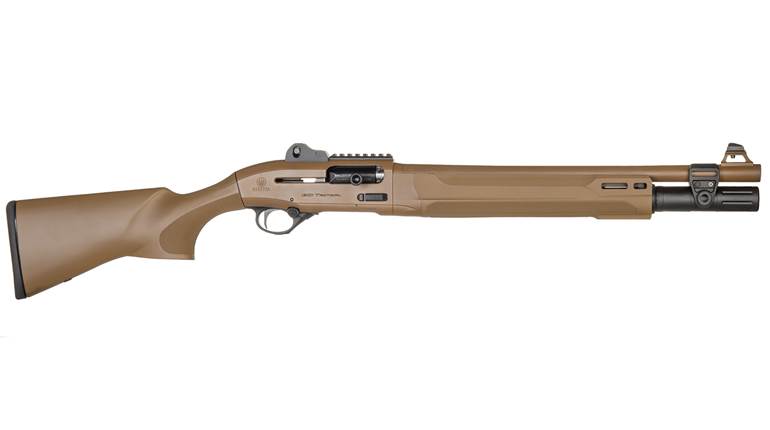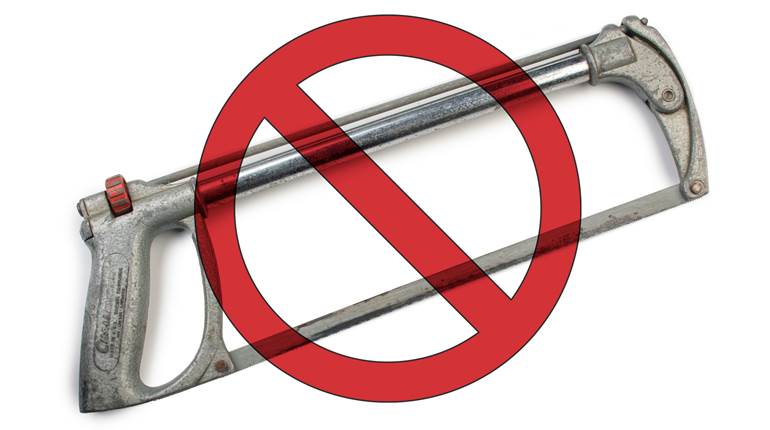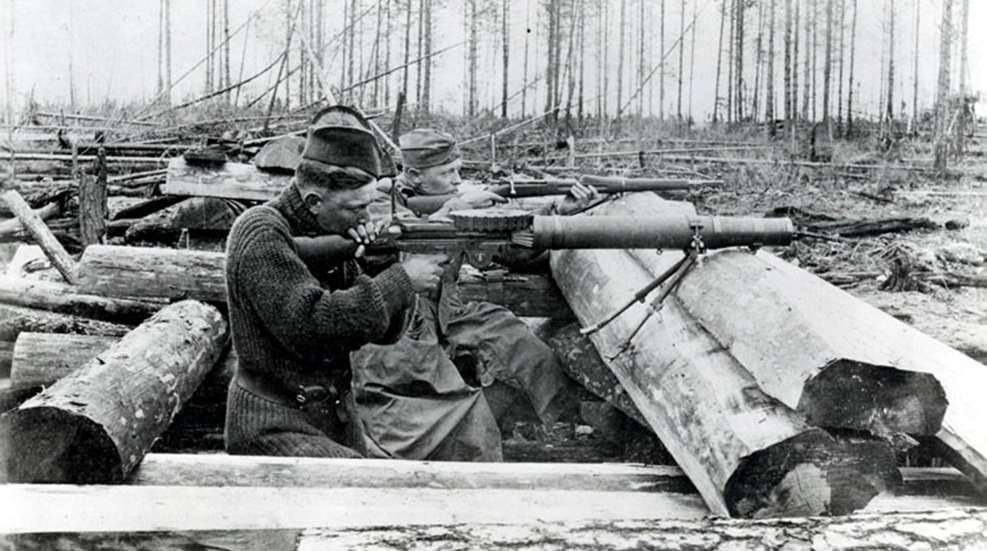
America’s Cold War with Russia began in September 1918. We just didn’t realize it then, and it took another 30 years or so for us to admit it—at least to ourselves. I could invest thousands of words in an attempt to explain why American troops were deployed to Northern Russian during the early autumn of 1918. In so doing, I would turn this short article into a lengthy one, yet offer readers little more in the way of clarity about that frozen expedition.
Nearly a century later, the mission parameters remain muddled, and the official reports and accounts unclear. Any complex explanation of the intervention is quickly undone with the simple question: Why? After our troops came home, American intervention in Russia during 1918-1920 was considered better off forgotten—buried in the backlog of U.S. history.
In my research, I found a concise and poignant description of our Russian Intervention from an American soldier who served there. The introduction to the book “Archangel: The American War with Russia” by A. Chronicler (1924) reads:
“Many people have asked me about the Russian campaign, why American soldiers went to Siberia, and what they did after they got there, for the general notion seems to be that Russia and Siberia are synonymous, and that the Russian Expedition, whatever its hazy purpose was, was centered about Vladivostok, and that in this far eastern port, a few American and Allied soldiers ‘marked time,’ while their comrades on the Western Front fought out, and eventually conquered, in the greatest of all wars.
“One American officer was actually ordered to join his command at Archangel, ‘via Vladivostok,’ and the order was issued by the War Department of the United States. Six thousand miles of inaccessible territory separated these two Russian ports, and the average American soldier who went out from Archangel in the fall of 1918, and, during the desolate winter months that followed, fought for his life along the Vologda railway, or far up the Dvina river, or in the snows of the Pinega and Onega valleys, never knew that Brigadier General William S. Graves of the United States Army, with thirteen hundred eighty-eight regulars and forty-three officers, had landed at Vladivostok on 4th September, 1918, and remained there after the Archangel fiasco had terminated. There was no conscious liaison between this American company of the Far East and that of the Far North, each performing burlesque antics in fantastic sideshows, while in the West, the greatest drama of all time was in its denouement, and a tense world trembled as it watched.
“Whether there was any political connection between the Archangel Expedition and the Vladivostok Expedition is for the statesmen to answer. Surely there never was any military connection. Obviously, there never could be any support or communication between the two forces, and the American soldier at the Arctic Circle who was not told the reasons why he faced death and unknown dangers there, and why he was weakened and broken, and made old by privation and intense cold, never knew that there was a Siberian Expedition, and does not know even to this day.”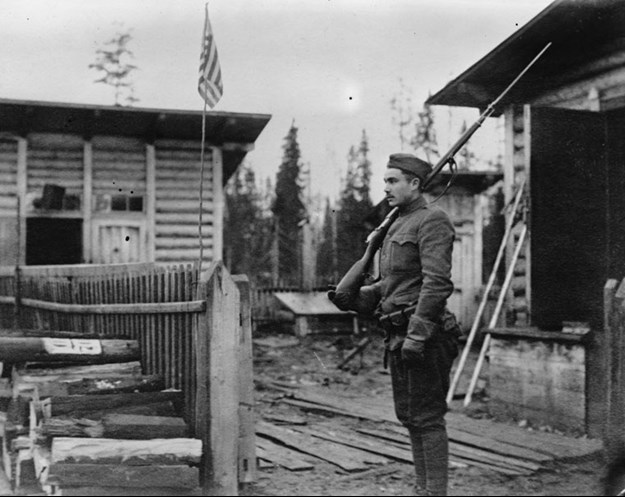
On guard in Archangel: A Doughboy of the 339th Regiment defends American interests in North Russia armed with a Mosin-Nagant Model 1891 rifle.
Apparently the author, A. Chronicler, preferred to remain anonymous to the government that had sent him to Russia for “some hazy purpose.” We can’t blame him for that. While politicians of the time offered strategic platitudes as they quietly changed the subject, our veterans of the Russian mission were left with frostbitten memories of comrades lost amidst the violent birth of the Soviet Union. The “Russia” bar affixed to their World War I Victory Medal was cold comfort for their wartime service in the Arctic.
Detroit’s Own Becomes The Polar Bears
Most of the 339th Regiment’s 4,500 men were draftees from Michigan when it was formed during June 1918. The unit quickly became known as “Detroit’s Own.” Near the end of July 1918, Gen. John J. Pershing, in command of the American Expeditionary Force (AEF) in France, separated the 339th Infantry from the 85th Division to form the core of the American intervention force in North Russia. The troops were assembled and equipped at Cowshott Camp, in Surrey, England, and by Aug. 27, 1918, they were sailing for Russia, arriving in Murmansk on Sept. 4.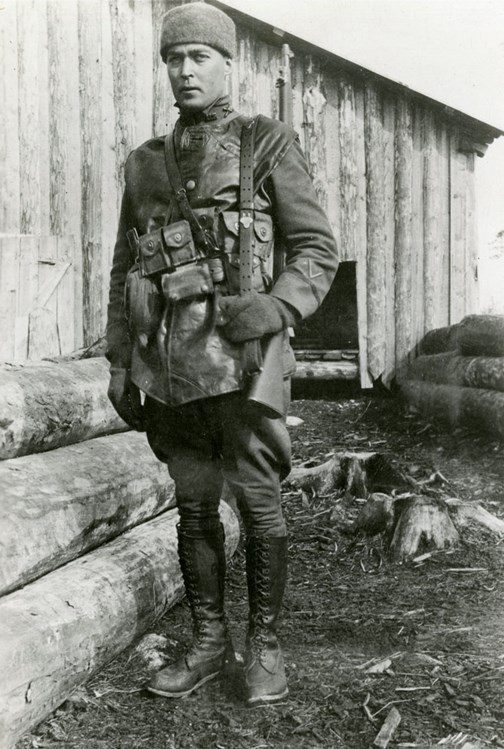
Major E.E. MacMorland, in charge of the North Russia Transport Corps, based at Murmansk, carrying an M1903 Springfield rifle.
Winter comes early along the edges of the Arctic, and soon Detroit’s Own became the “Polar Bears.” Placed under overall British command, and despite an uncertain assignment, as well as ever-progressive “mission creep,” the men of the 339th distinguished themselves in multiple combat engagements with Bolshevik forces. After World War I ended in November 1918, the Polar Bears soldiered on, fighting both the tortuous weather and the murderous Bolsheviks. By May 1919, U.S. forces had suffered more than 500 casualties in the North Russia campaign. By the end of that month, the American Archangel contingent concentrated their forces and began the long journey to the United States via Brest, France. The last unit was on its way home by the end of June.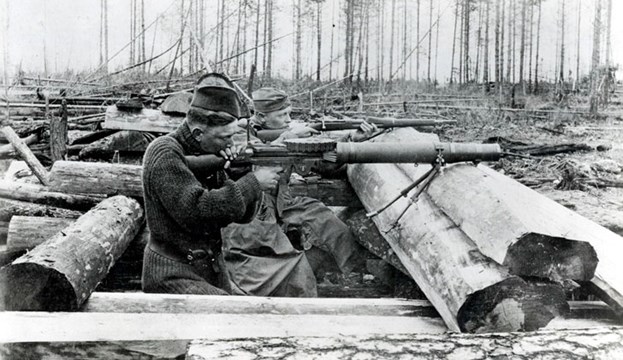
The Springfield rifle in North Russia: Not all the rifles carried by the “Polar Bears” were of Russian design. Men of the North Russia Transport Corps defend the railway with a Lewis MG and a M1903 rifle.
According to “The History of the American Expedition Fighting the Bolsheviki: Campaigning in North Russia, 1918-1919” (Compiled & Edited by Capt. Joel R. Moore, Lt. Harry H. Mead and Lt. Lewis E. Jahns of the 339th U.S. Infantry): "So they stuck and fought, suffering through the bitter months of winter just below the Arctic Circle, where the winter day is measured in minutes and the night seems like a week. Proud that he was once a ‘side kicker’ and a ‘buddy’ to some of those fine fellows who unselfishly and gladly gave the last that a man has to give for any cause at all.”
The American-made Model 1891 Mosin-Nagant Rifles
Most of Europe was not prepared for the intensity of the Great War. The Russian Empire found itself without sufficient manufacturing capability and turned to neutral America for help. In early 1915, the Russian government placed an order for 1.5 million Model 1891 rifles along with 100 million rounds of 7.62x54 mm R ammunition from Remington-UMC. An additional 1.8 million Model 1891 rifles were ordered from New England Westinghouse. Russian rifles would be made by American craftsmen, and given American black walnut furniture. Of the nearly 37 million Model 1891 rifles made from 1891 until the early 1960s, the American-crafted rifles are the best built and the best looking.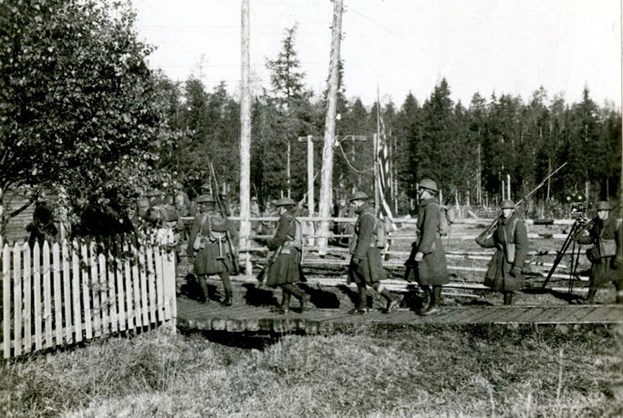
American troops with Mosin-Nagant rifles return after a patrol in the Obozerskaya area, Sept. 29, 1918. Note the Signal Corps cine camera team in the background.
American Rifleman Field Editor Bruce N. Canfield wrote: “The U.S.-made M1891 Mosin-Nagant rifles were very well crafted with blued barrels, receivers and furniture. The stocks and handguards were made from good quality walnut. On each rifle you can find the name of the maker (i.e., ‘Remington Armory’), the year of production (‘1917’), the serial number and an Imperial Russian crest on top of the barrel between the receiver ring and rear sight. Many components were marked with the serial number of the rifle. Another Imperial crest was stamped on the right side of the stock. The Mosin-Nagant rifles acquired by the American government were also surcharged with a ‘U.S.,’ the Ordnance Department ‘flaming bomb’ insignia and the typical WWI-era ‘eagle head’ inspection stamp. These were applied on the bottom of the stock just forward of the trigger guard.”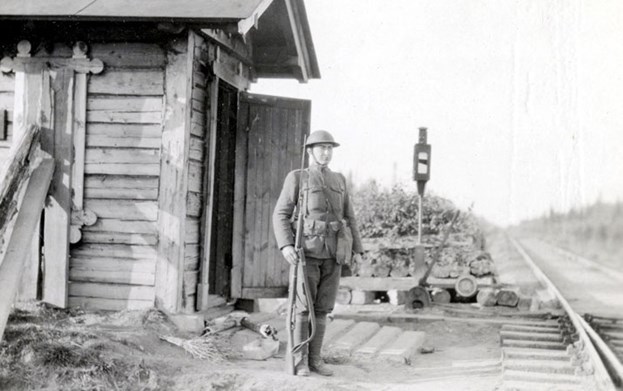
A Mosin-Nagant rifle-armed sentry of the 339th Infantry, guarding a railroad switch shack at Obozerskaya, Sept. 24, 1918.
In February 1917, the Czar was overthrown. Then, in November 1917, the cobbled-together Russian government was overthrown by the Bolshevik Revolution. Immediately afterwards, the Russians defaulted on their contracts with Remington and Westinghouse. Almost 470,000 Model 1891 rifles had been delivered to Russia by that point, but many thousands remained waiting in the storerooms of their American manufacturers.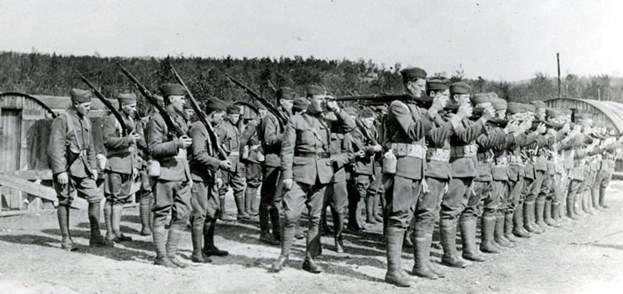
Rifle inspection: Major Scales, Inspector General of the North Russia Transport Corps, examines Mosin-Nagant Model 1891 rifles at his unit’s Soroka camp. Autumn 1918.
In January 1918, the government stepped in, partially to preserve the experienced gun-making staffs at Remington and Westinghouse, and also to secure ready-to-use rifles to train the growing numbers of U.S. Army recruits. The Westinghouse inventory was purchased, plus another 200,000 rifles, and the Remington inventory of Model 1891s was acquired, along with 600,000 additional rifles. For all intents and purposes, if not officially, Uncle Sam adopted a number of Russian orphans.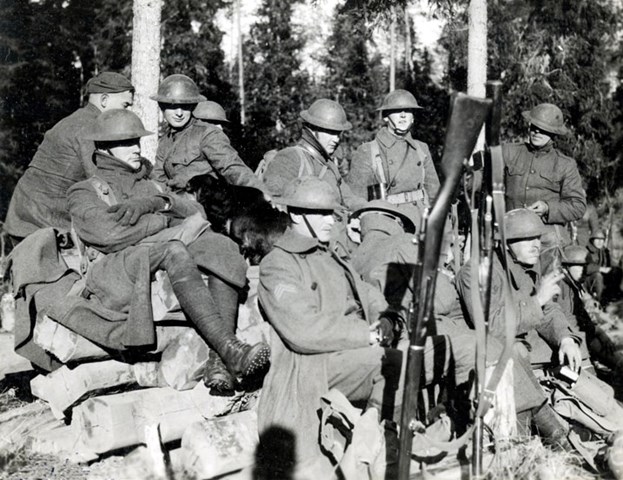
Men of the 339th Regiment at Obozerskaya, late September 1918. There was no scabbard issued for the bayonet, and the Mosin-Nagant rifle was intended to be used with bayonet attached at all times. American troops have devised an interesting technique for securing the Model 1891 rifle when at rest.
Bruce Canfield also notes that despite several published reports that the American-made Model 1891 Mosin-Nagant rifles were adopted as substitute standard equipment by the U.S. military, and ostensibly given the designation of “U.S. Magazine Rifle, Model of 1916,” there is no official Ordnance Department documentation to confirm this.
Unloved by our troops: The U.S. military’s Russian rifle, the M1891 Mosin-Nagant 3-Line rifle, chambered in 7.62x54 mm R.
Other names for these rifles exist. A U.S. Ordnance document, dated Sept. 7, 1918, illustrates the rifle and alternately calls it the “Russian 3-Line Infantry Rifle”, or the “Russian 3-Line Rifle.” Other monikers include the official-sounding “Russian Three-Line Rifle, Caliber 7.62 mm. (.3”),” the bland “Russian Rifle,” and the flamboyant “Amerikanski Rifle.” In the parlance of American gun collectors and dealers, you might hear any number of these names pronounced in the same conversation.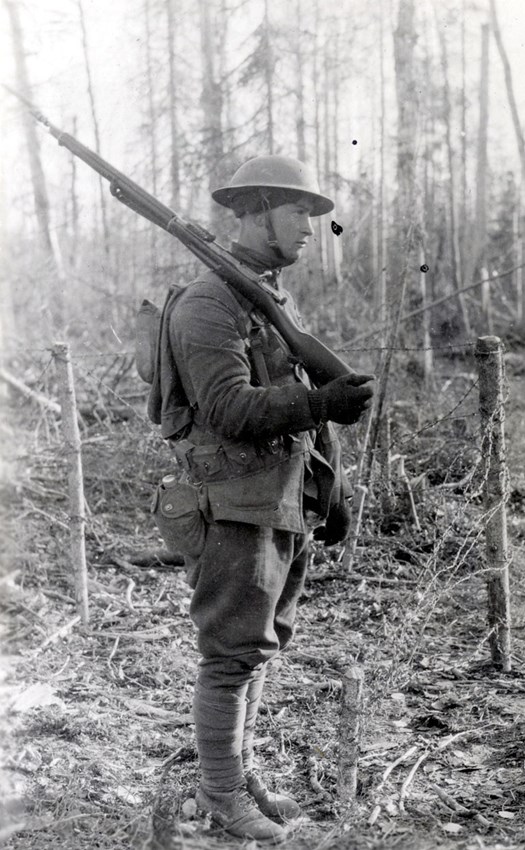
American rifleman, Russian rifle. Defending the critical rail junction at “Verst 466” with the 339th Infantry Regiment, Sept. 24, 1918.
It is generally accepted that American troops were not happy about exchanging their M1903 or M1917 rifles for the Russian types. But, based on their combat performance in North Russia, their marksmanship did not suffer. Large numbers of dead Bolsheviks can attest to that. 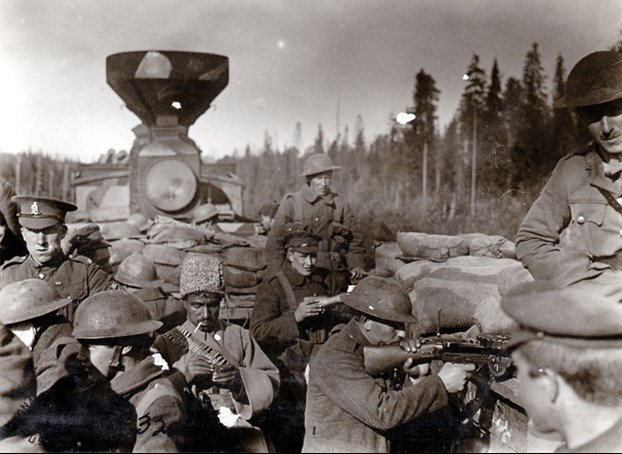
Control of the railways was critical: Allied armored train, armed with Lewis machine guns and carrying British, American, White Russian and French troops near Obozerskaya, Russia. Sept. 24, 1918.
In “The History of the American Expedition Fighting the Bolsheviki: Campaigning in North Russia, 1918-1919”, several passages describe the Doughboys’ quick and effective transition to using foreign arms:
“The officers and men sent were nearly all, to a man, those who had already suffered wounds or physical exhaustion on the Western Front. This was late in June (1918). About this time the plan of the Allied Supreme War Council as already stated was, under strict limitations, acceded to by President Wilson, and the doughboys of the 339th Infantry in July found themselves in England hearing about Archangel and disgustedly exchanging their Enfields for the Russian rifles.”
------------
“‘D’ Company gallantly deployed and wading the swamp approached within one thousand five hundred yards of the enemy, who suddenly opened up with machine guns, rifles, and a Russian pom-pom. This latter gun is a rapid-fire artillery piece, firing a clip of five shells weighing about one pound apiece, in rapid succession. We later discovered that they, as well as most of the flimsy rifles, were made by several of the prominent gun manufacturers of the United States.”
-------------
“The Americans, hearing of actions at the fronts, were desperately striving to learn how to use the Lewis guns and the Vickers machine guns. At Camp Custer they had perfected themselves in handling the Colt and the Brownings but in England had been obliged to relinquish them with the dubious prospect of re-equipping with the Russian rifles and machine gun equipment at Archangel.
“Here let it be said that the American doughboy in the North Russian campaign mastered every kind of weapon that was placed in his hands or came by fortune of war to his hand. He learned to use the Lewis gun and the Vickers machine gun of the British and Russian armies, also the one-pounder, or pom-pom. He became proficient in the use of the French Chauchat automatic rifle and the French machine gun, and their rifle grenade guns. He learned to use the Stokes mortars with deadly effect on many a hard fought line.”
----------------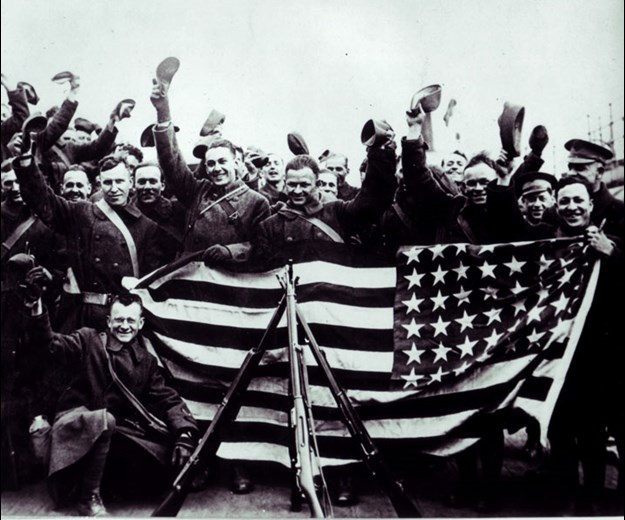
Victory celebrated: U.S. troops stationed in North Russia celebrate the Armistice that ended World War I in early November 1918. Americans would remain at war in the Archangel area until May 1919.
In November 1918, the U.S. government sent approximately 77,000 Model 1891 rifles to Vladivostok, to aid the Czech Legion marooned there, fighting the Bolsheviks in Siberia. As American troops withdrew from North Russia, they presumably left their Model 1891 rifles behind in the hands of the dwindling numbers of anti-Bolshevik troops. Photos showing the 339th Regiment after returning to the United States show them happily posing with U.S. M1917 “Enfield” rifles. America’s Russian experiment was over.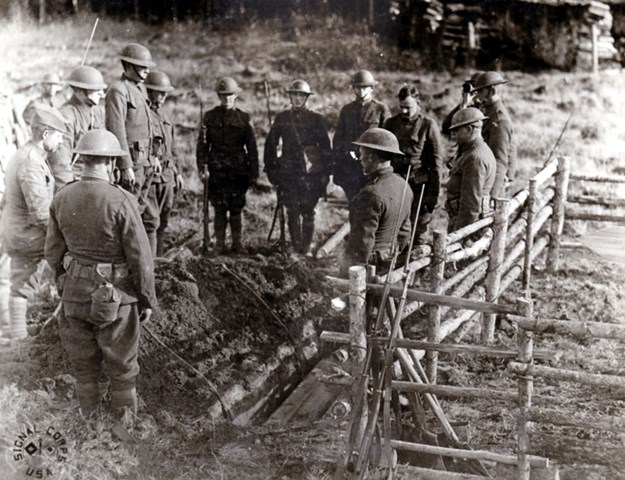
American losses in Russia: Burial detail of the 339th Infantry Regiment at Obozerskaya during October 1918.
And some in Archangel are laid
'Neath rows of crosses Russian-made
With marker of the Stars and Stripes
Not minding bugle, drum or pipes
We sleep, the brave, in Russia.
And comrades as you gather far away
In God's own land on some bright day
And think of us who died and rest
Just tell our folks we did our best
In far off fields of Russia.
From “In Russia’s Fields” by an anonymous writer in the 339th Infantry Regiment.













